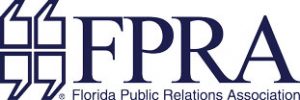By: Tamara Herchel
In a nation where tweets, texts, and Facebook posts have become integrated into daily life, organizations are in danger of the “personal” in their interpersonal communication.
Ron Hess, who shares Ryan Lochte’s home town, dives into the “then and now” aspects of employee communication is his presentation, “Generations Connected: What Today’s Employees Want from Workplace Communications.” While technologically convenient communication methods have grown in usage, a TowersWatson 2012 study suggests that the more plugged in we are, the less we are connected; only 35 percent of employees report feeling engaged.
Hess provides anecdotal examples of employee engagement success stories and major fails that he skillfully extracts through employee focus groups – managers who proudly led weekly meetings, incredulous to learn that their delivery of status updates got lost in the alphabet soup of acronyms and abbreviations that commonly rolled off manager’s tongues – it seems the first step to effective employee communication is to ensure we’re all speaking the same language!
Hess acknowledges that employees want a personal touch at work and are unfilled; the digital connection has taken precedence over face-to-face communication and it’s creating a culture of detachment between managers and employees. Along with conveying the importance of an open-communication environment, Hess describes the following employee communication issues and how they drive engagement:
- Employers don’t explain how employees fit in to the big picture – this fails to connect the dots of their piece of the company’s organizational picture.
- Employers are padding their communication with too much fluff – this impairs the employee’s understanding of what information is critical to their work.
- Employers are failing to tell employees how they’re doing – lack of personal feedback can hinder an employee’s efficacy and motivation.
- Employees feel that they are not invited to voice their ideas – employees feel hesitant to share ideas and lose confidence that their employers are listening to them.
- Employees feel that their contributions aren’t acknowledged – lack of employee recognition leads to feelings of resentment and lack of motivation.
- Employees report observing employers saying one thing, and doing another – this results in a lack of trust between managers and their employees.
Hess suggests the key to overcoming these key issues is an integrated media communication plan that not only incorporates email, but also a useful intranet, face-to-face communication, and other mediums including internal YouTube channels and multi-level efforts such as podcasts combined with interactive blog entries.
Hess offers these additional tips to building an effective communications plan:
- Create a culture of face-to-face communications
- Train managers to upgrade communication skills
- Establish a structured process for employee interaction and delivery of critical information
- Build understanding among managers
- View communication as a powerful tool for competitive advantage
Hess explains that the key to altering manager perceptions of the importance of communication is to reward their efforts. Facilitate stand-up meetings to go over daily business and share ideas and have a standing monthly meeting to recognize outstanding communication efforts. Offer research findings to support the value of good communication; for instance, a few practices that directly link to increasing shareholder value are creating an employee’s line of sight to upper management following a formal communications process. These procedures manage employee expectations so they are prepared for the methods used to convey key messages to them.
Hess provided case studies of exceptional employee communications such as the State of Georgia’s driver license office. Faced with exuberant wait times, customers were experiencing many levels of frustration. Managers took action by incorporating employees in a plan to raise the bar on customer service and efficiency, making them part of the change they wanted to see and implement. The employees brainstormed on catchphrases and imagery to reflect the new service program, which resulted in wait times decreasing from 90 minutes to less than 30 minutes per customer!
Another great example came from SCANA in Columbia, South Carolina- their employee intranet, an award-winning outlet for employee communication, took employee feedback to design a site that emphasizes simplicity, ruthlessly protects employees’ valuable time, and is comprised of clear, short summarized content with great headlines, quotes, and an emphasis on repeating key messages to drive points home. This reinforcement clarifies what is most important to an organization’s mission and helps to simplify an employee’s role in accomplishing that mission.
Hess’ biggest research tool is clearly his interactive focus groups, which have generated an abundance of valuable data used to design custom communications plans. By creating a safe space, employers can invite employees to share their preferred communication styles, introduce ideas, and make valuable contributions to employee communications. Hess stresses that it is the culture of open communication that will be most effective in increasing the quality and value of employee connections, and thus increasing the quality and efficacy of an organization from the inside out!
Ron Hess is president of Motiv8 Communications, a full-service employee communications consulting firm based in Port Orange, Fla., near Daytona Beach. Prior to establishing his own consulting firm a decade ago, Hess managed corporate employee communications at GE and at International Paper. He is a frequent speaker and writer on employee communication topics and shares best practices through his online column, “Ideas and Trends in Employee Communications.” His clients include some of the nation’s best-known companies and organizations. Hess’ website is at www.motiv8comm.com.
